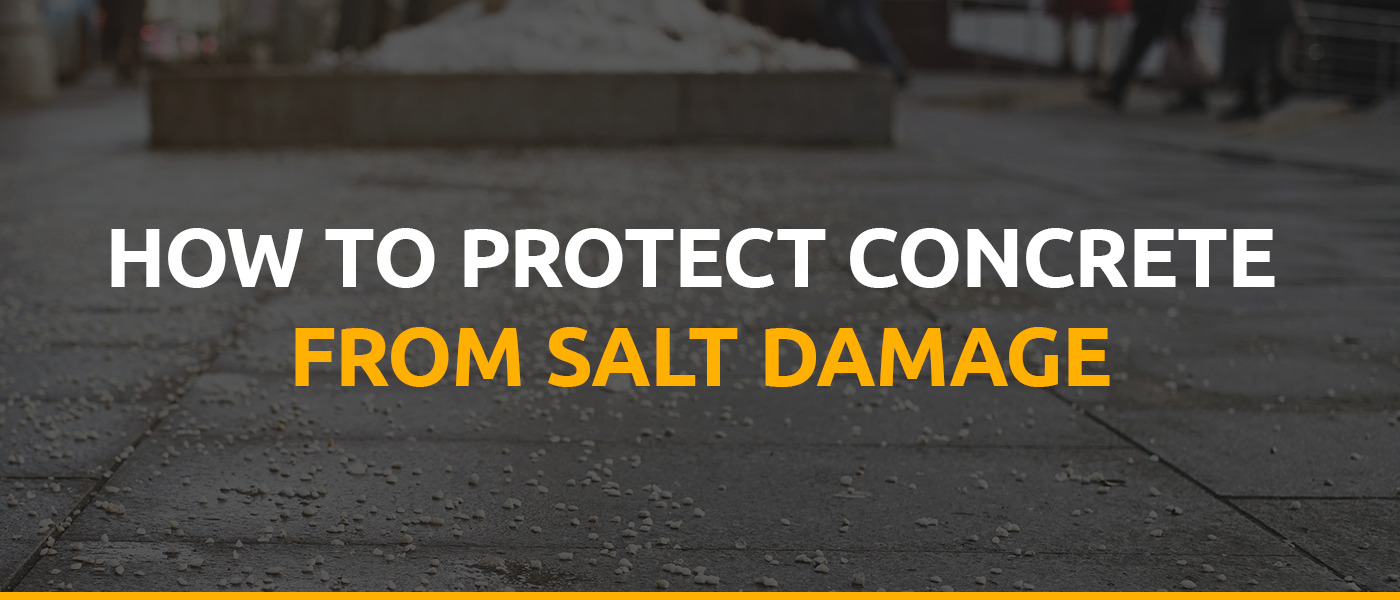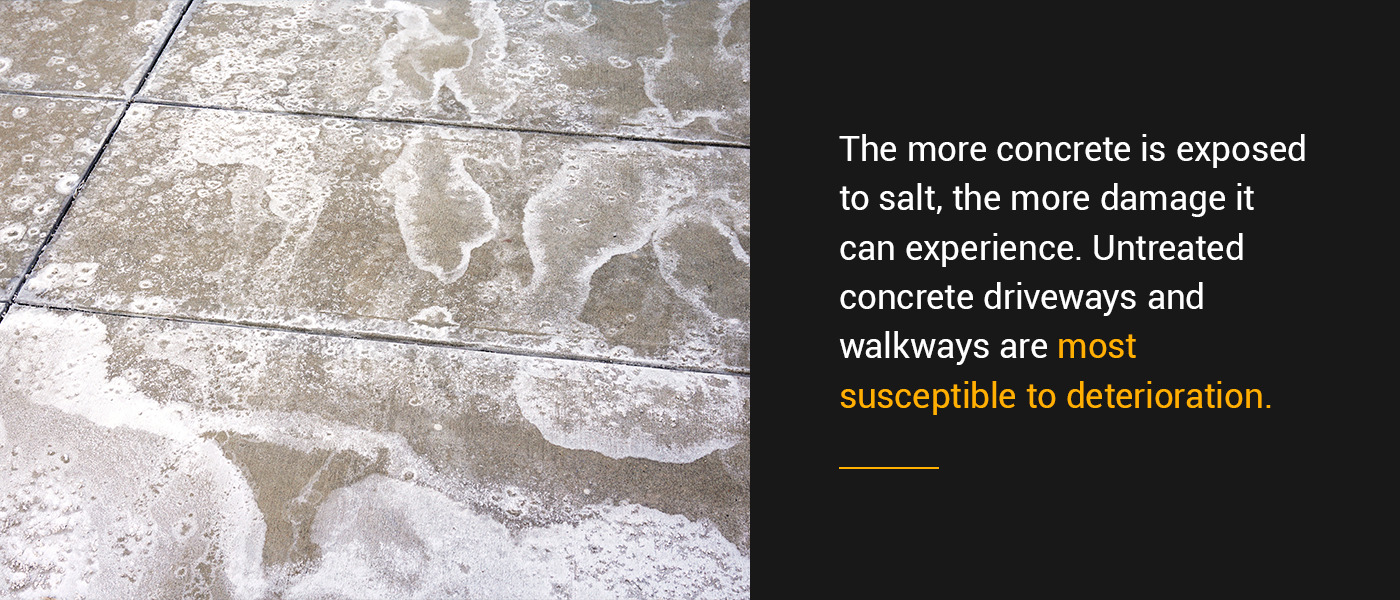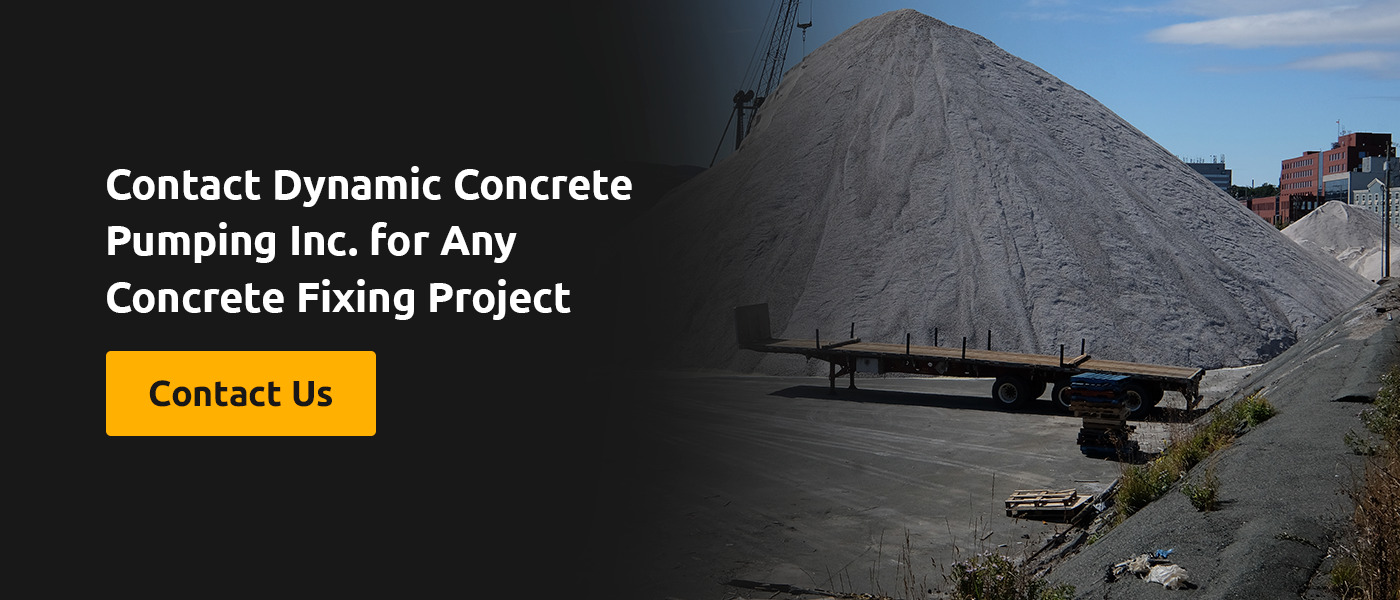
How to Protect Concrete From Salt Damage
Posted By:Dynamic Concrete Pumping , Date: Sep 15, 2023

While rock salt is crucial for keeping ice off walkways and ensuring road safety in the winter months, it can have a negative impact on your concrete. Over time, salt can lead to deterioration, especially if your concrete is unsealed.
The good news is there are various steps you can take to prevent some of this damage from occurring. Learn how to stop salt damage to concrete and what to do if you end up experiencing damage to your driveways, patios or sidewalks.
How Does Salt Damage Concrete?
Salt causes significant damage to concrete due to its chemical properties and the freezing and thawing cycles it induces during winter. Here’s how it occurs:
- Salt dissolves and creates a brine: When rock salt is applied to concrete surfaces for de-icing, it dissolves in water and forms a brine solution. The solution can penetrate the porous concrete, allowing the salt to reach the steel reinforcements inside, causing corrosion.
- Freezing and thawing: Freezing and thawing can worsen the damage caused by salt. As temperatures drop, the water absorbed by the concrete expands as it freezes, creating internal pressure. As the ice thaws, the water contracts to leave small cracks in the concrete. These cycles repeat as temperatures change, widening the cracks and causing surface scaling.
- Chemical reaction: The chemical reaction between salt and concrete can further weaken its structure. The salt reacts with calcium hydroxide in the concrete to form crystals that have a larger volume than the original compounds. The expansion then leads to tiny cracks, reducing your concrete’s strength and durability.
The more concrete is exposed to salt, the more damage it can experience. Untreated concrete driveways and walkways are most susceptible to deterioration. Thankfully, regular maintenance can prolong your concrete surface’s life and mitigate the damaging effects of salt.

Why It’s Important to Prevent Salt Damage
Protecting your concrete from salt damage is crucial, as it directly impacts the longevity, safety and appearance of your concrete walkways, driveways and other surfaces.
- Structural integrity: Salt-induced damage can weaken your concrete’s structure over time, leading to cracks, spalling and scaling. Over time, it can compromise your driveway’s strength and durability, posing safety risks.
- Cost-effectiveness: Preventing concrete salt damage is more cost-effective than dealing with repairs or replacements later. Investing in preventive measures can extend your concrete’s life span and save you significant maintenance and reconstruction costs in the long run.
- Safety: Concrete surfaces damaged by salt can become hazardous. Preventing damage now can prevent cracks or uneven surfaces that lead to trips and falls — protecting you, your family and your guests.
- Appearance: Salt-induced damage can affect the appearance of your concrete surfaces, making them appear worn, discolored and unsightly. Overall, the damage can affect the visual appeal of your property and diminish its value. Preventing salt damage preserves and enhances your concrete’s look.
How to Prevent Salt Damage
You’ll want to implement preventive measures before and during winter to protect your concrete from salt damage. Here’s how to prevent salt damage to concrete:
1. Apply Concrete Sealer
To protect your concrete before winter hits, consider using a water-repellent or densifier sealer to create a protective barrier on the surface. These sealers can prevent salt water from penetrating the concrete, reducing the risk of damage.
2. Use a Protective Coating
Like sealers, you might apply protective coatings specifically designed to shield your concrete from salt damage. These coatings can act as an extra layer of defense against salt and harsh winter conditions.
3. Clear Drainage Covers
Before and during winter, ensure any drainage systems, like gutters and downspouts, are clear of debris and properly functioning. Adequate drainage prevents water from pooling on your concrete, reducing salt exposure and potential damage.
4. Use a Plastic Snow Shovel
When clearing your concrete driveways or walkways of snow, use a plastic snow shovel instead of metal. Plastic shoves are less likely to scratch or damage your concrete while removing snow.
5. Remove Excess Snow Buildup
Throughout the winter, ensure you promptly remove excess snow buildup from concrete surfaces and around your vehicle’s wheels. This can prevent prolonged exposure to salt and de-icers. Regular snow removal reduces the need for excess salt and minimizes potential damage.
At the end of winter, inspect your concrete for salt residue and promptly rinse it off with a garden hose or pressure washer. Taking care of salt buildup can prevent further damage to your concrete.
6. Use Concrete-Friendly Ice Melts
Limit salt use in the winter and instead try applying concrete-friendly ice melts, like those that contain calcium chloride or magnesium chloride. These concrete-friendly ice melts are less harmful and more effective in preventing ice formation.
What to Do if Your Concrete Is Damaged
When your concrete is damaged by salt, you’ll want to address the issue quickly to prevent further deterioration. While minor concrete salt damage can be addressed with DIY solutions, significant or extensive damage requires the expertise of professionals.
Here’s why you should call professionals to fix salt-damaged concrete:
- Expert assessment: Professionals have the knowledge and experience to accurately assess the extent of the salt damage and identify underlying issues that might have caused the problem. Their expertise allows a comprehensive solution for the specific needs of your concrete.
- Proper repair techniques: Professionals have the tools and equipment to repair salt-damaged concrete effectively. They’ll use industry-approved repair techniques to ensure your concrete looks good as new.
- Preventing further damage: Experts can fix visible damage and take preventive measures to protect your concrete from more salt damage. That way, you get a long-lasting repair to withstand harsh winter conditions and salt exposure.
- Time and cost-efficient: While doing your own repairs may seem cost-effective initially, they often lead to inadequate results and require frequent rework. Calling professionals saves time and money in the long run by providing a durable and lasting solution.
When your concrete is damaged by salt, calling professionals is the best course of action. Their expertise, specialized tools and knowledge of the best repair techniques can ensure the damage is addressed correctly and your concrete is restored to its optimal condition.
Contact Dynamic Concrete Pumping Inc. for Any Concrete Fixing Project
When your concrete is damaged by salt, it can impact your property’s appearance and lead to costly repairs. Protect your driveways and walkways with preventive measures before and during winter. If you experience any concrete damage, call professionals for a more cost-effective, lasting solution.
Dynamic Concrete Pumping Inc. has a combined experience of over 40 years of providing excellent concrete pumping and placing services. We constantly update our fleet to the latest technology, using advanced methods to restore your concrete’s structural integrity and aesthetics. Choosing us means you ensure the longevity of your concrete and enhance your property’s value.
Contact us today to learn more about our services and experience the difference we can make for your property.


